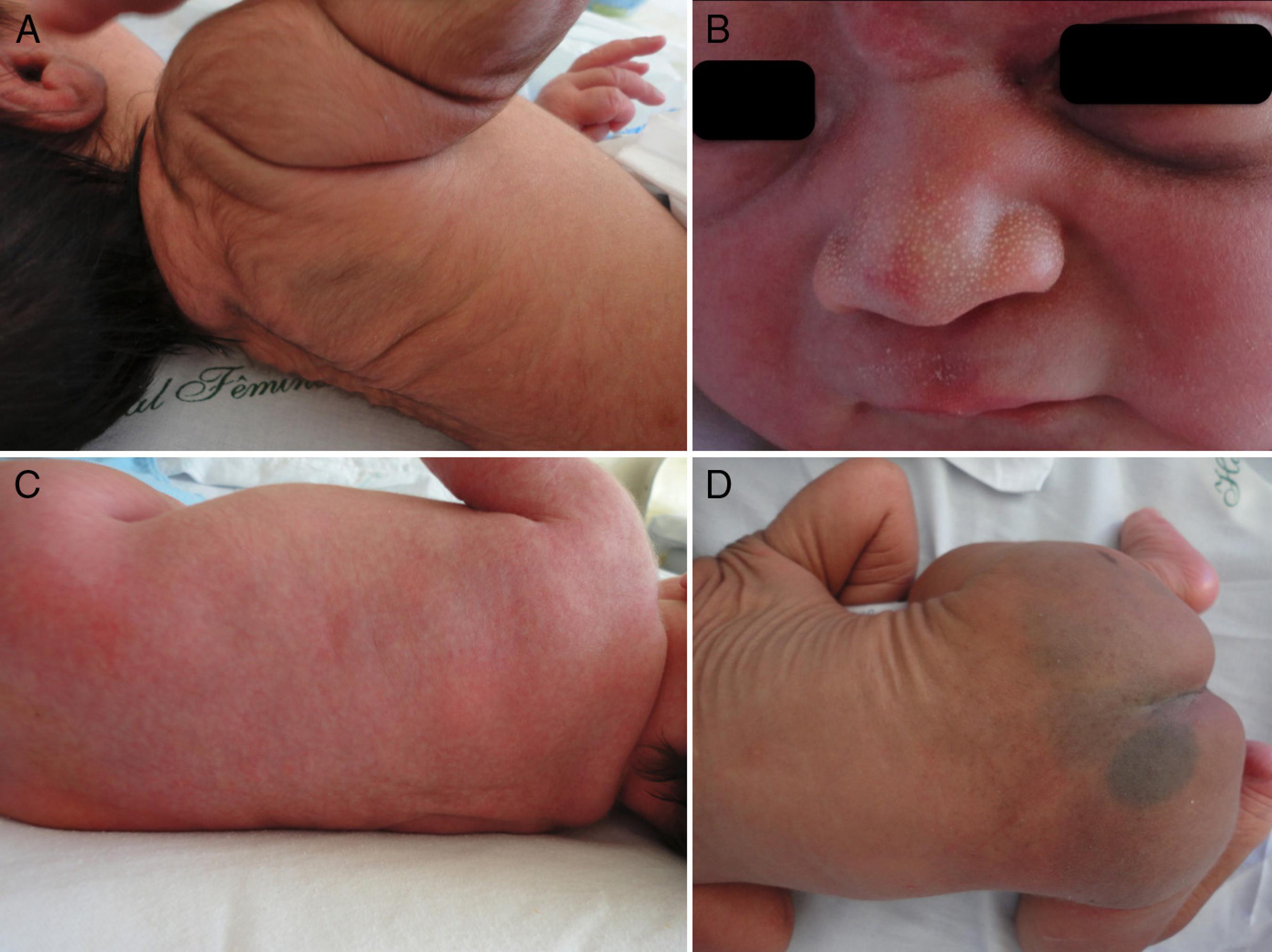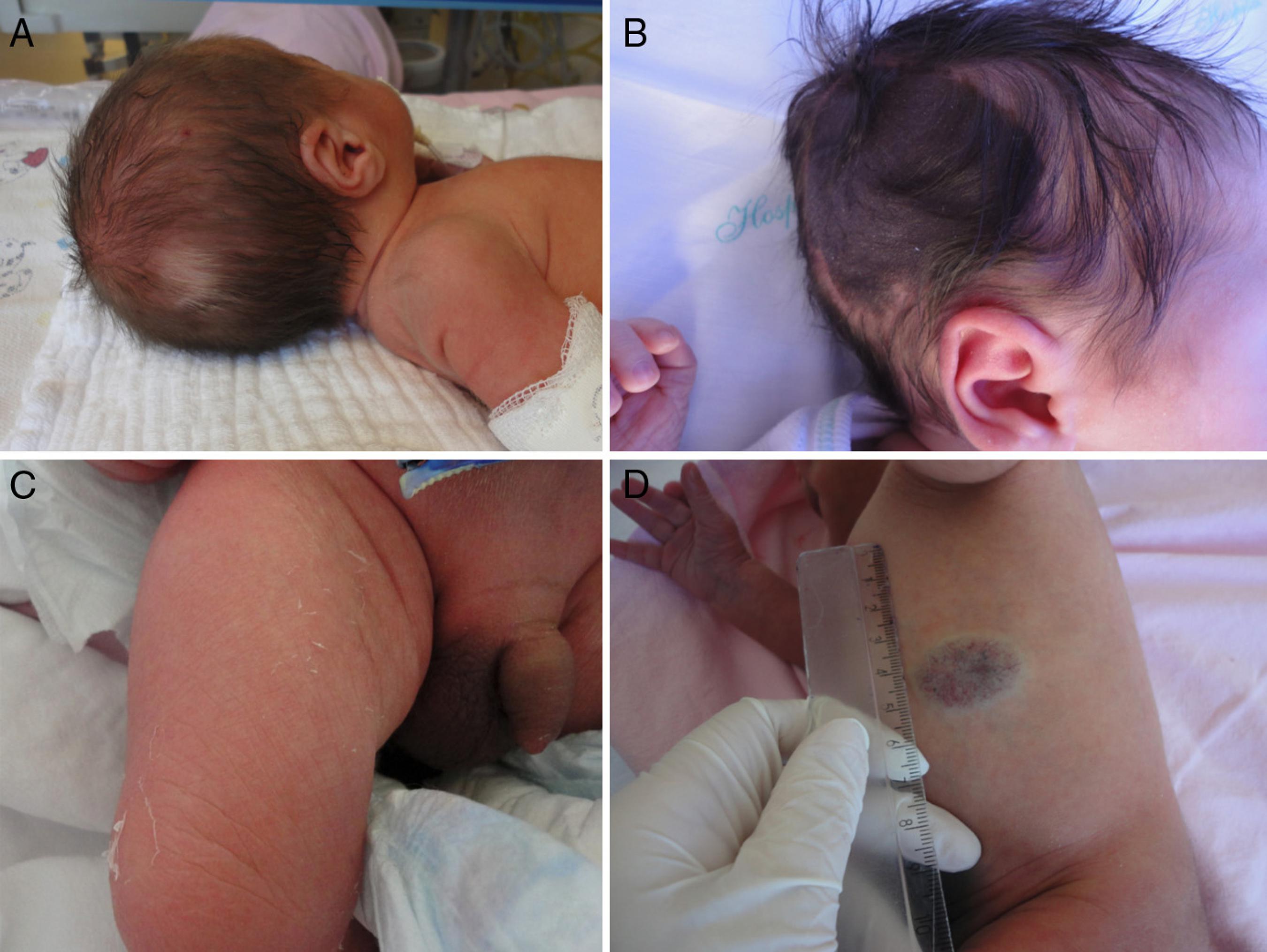Abstract
Objective:
To determine the prevalence of neonatal dermatological findings and analyze whether there is an association between these findings and neonatal and pregnancy characteristics and seasonality.
Methods:
Newborns from three maternity hospitals in a Brazilian capital city were randomly selected to undergo dermatological assessment by dermatologists.
Results:
2938 neonates aged up to three days of life were randomly selected, of whom 309 were excluded due to Intensive Care Unit admission. Of the 2530 assessed neonates, 49.6% were Caucasians, 50.5% were males, 57.6% were born by vaginal delivery, and 92.5% of the mothers received prenatal care. Some dermatological finding was observed in 95.8% of neonates; of these, 88.6% had transient neonatal skin conditions, 42.6% had congenital birthmarks, 26.8% had some benign neonatal pustulosis, 2% had lesions secondary to trauma (including scratches), 0.5% had skin malformations, and 0.1% had an infectious disease. The most prevalent dermatological findings were: lanugo, which was observed in 38.9% of the newborns, sebaceous hyperplasia (35%), dermal melanocytosis (24.61%), skin desquamation (23.3%), erythema toxicum neonatorum (23%), salmon patch (20.4%), skin erythema (19%), genital hyperpigmentation (18.4%), eyelid edema (17.4%), milia (17.3%), genital hypertrophy (12%), and skin xerosis (10.9%).
Conclusions:
Dermatological findings are frequent during the first days of life and some of them characterize the newborn's skin. Mixed-race newborns and those whose mothers had some gestational risk factor had more dermatological findings. The gestational age, newborn's ethnicity, gender, Apgar at the first and fifth minutes of life, type of delivery, and seasonality influenced the presence of specific neonatal dermatological findings.
KEYWORDS
Newborn; Neonatology; Child health services; Child health; Infant care; Skin manifestations


